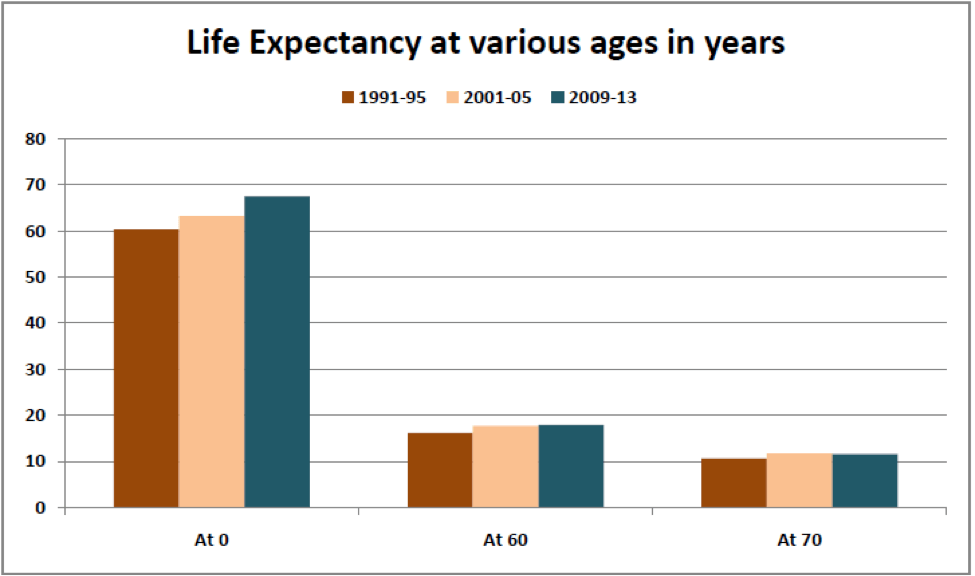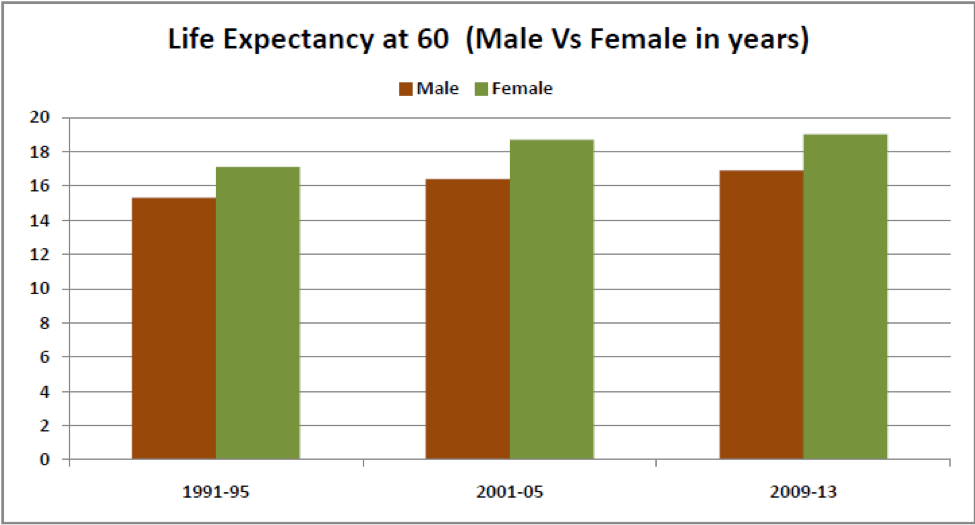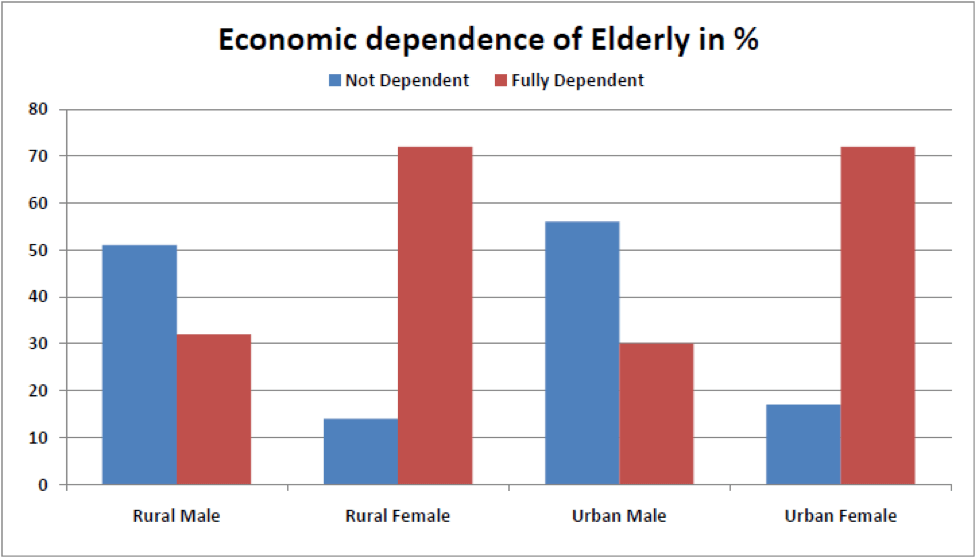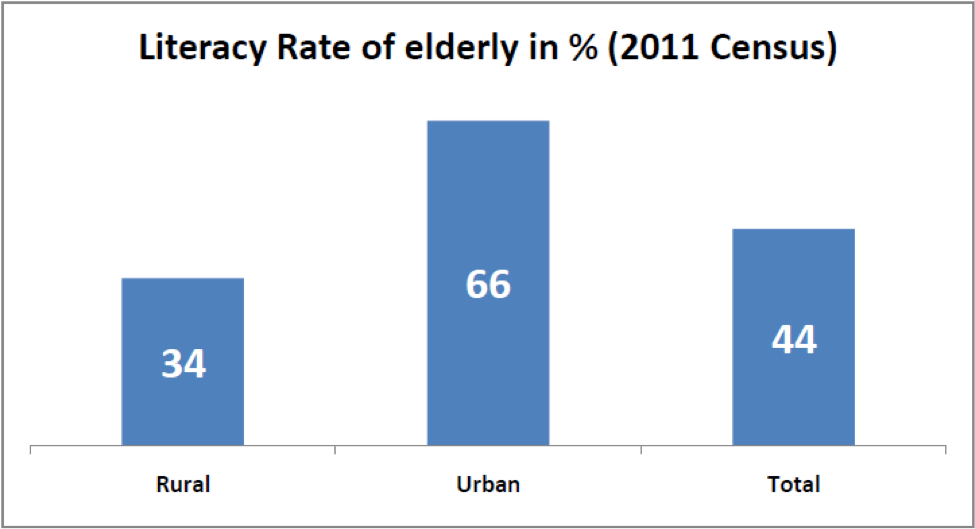[orc]MoSPI recently released a report on the elderly people in India. According to this report, the life expectancy at 60 is more for female than male. 65% of the elderly depend on others for their day to day maintenance.
The Ministry of Statistics & Program Implementation (MoSPI) recently released a report on elderly people in India. The report contains details of the various programs for the elderly apart from comprehensive data on the elderly in the country. According a 2004 NSSO survey, 51% of the elderly male in the rural areas and 56% in the urban areas are economically independent. These percentages for elderly female are much lesser.
Life expectancy at 60 is more for female than male
The life expectancy at various ages has been continuously increasing owing to better medical facilities. Life expectancy at 0 was 67.5 years between 2009 and 2013 compared to 60.3 years between 1991 and 1995. Similarly life expectancy at 60 was 17.9 years between 2009 and 2013 compared to 16.2 years between 1991 and 1995.
 Life expectancy at 60 was always more for female and male. Between 1991 and 1995, the life expectancy for male at 60 was 15.3 years compared to 17.1 years for female. Between 2001 and 2005, the female life expectancy at 60 was 18.7 years compared to 16.4 years for male. Similar trend was observed between 2009 and 2013.
Life expectancy at 60 was always more for female and male. Between 1991 and 1995, the life expectancy for male at 60 was 15.3 years compared to 17.1 years for female. Between 2001 and 2005, the female life expectancy at 60 was 18.7 years compared to 16.4 years for male. Similar trend was observed between 2009 and 2013.
 65% of the elderly depend on others for day-to-day maintenance
65% of the elderly depend on others for day-to-day maintenance
According to a 2004 survey of the National Sample Survey Office (NSSO), 65% of the elderly are completely dependent on others for their day-to-day maintenance. There are wide variations in the dependency numbers between male and female. While only 32% of the rural elderly males are fully dependent on others, 72% of the rural elderly females are fully dependent on others. Similarly, 30% of the urban elderly males are fully dependent on others while 72% of the urban elderly females are fully dependent on others.
 Literacy rate of Urban elderly almost double that of Rural elderly
Literacy rate of Urban elderly almost double that of Rural elderly
According to the 2011 census, the literacy rate of the rural elderly was only 34% compared to the 66% literacy rate of urban elderly. Overall, the literacy rate of the elderly was 44%. The literacy rate of elderly male (59%) was more than double that of the elderly female (28%). In rural areas, the elderly male literacy rate (51%) was almost three times that of the elderly female literacy rate (18%). The difference was also very stark in terms of education levels. While 30% of urban elderly had an education qualification of matriculation and above, the corresponding percentage for the rural elderly was just 7%.

5% of the elderly live alone
According to the NSSO report of 2004, 5.2% of the elderly live alone and 12% of them live with their spouse only. 44.8% of the elderly live with other members while 32.1% live with their children. Out of the elderly who are living alone or with spouse, children /grandchildren/sibling live in the same village/town or in the same building in 55.5% of the cases.
Featured image: Saptarshi Sanyal


